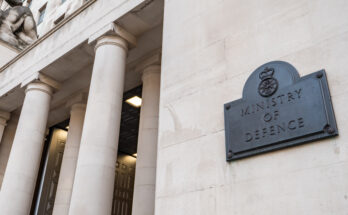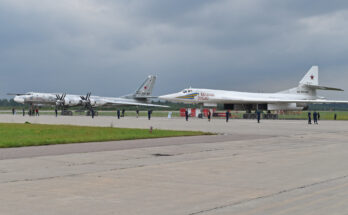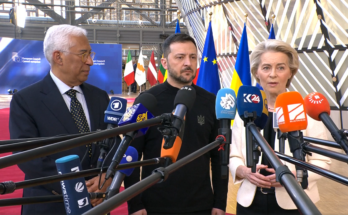
In June, after months of speculation, Kyiv launched its much-awaited counter-offensive against the Russian military, aiming to break the impasse that settled over the conflict through the winter and spring months. To date, however, and despite the large amount of military hardware delivered to the country, Ukraine has only re-captured marginal amounts of territory, underscoring the grueling challenge of dislodging Russian forces along the front in the east and south.
Absent a breakthrough by either side on the frontlines, the core question for the longevity of the conflict is how long the combatants can maintain operations, as neither side will seek serious resolution through diplomatic channels if it feels as if it still has an advantage or opportunity on the battlefield. Enthused with its position in the war, Moscow is confident enough to play hardball with recent international efforts to pursue peace talks. Even as it courts friends throughout Africa, Moscow panned an African-led peace proposal and skipped the recent talks in Riyadh geared toward the same purpose. The message from the Kremlin is clear: peace talks must run through Moscow.
Though Russia badly misread Ukraine’s willingness to defend itself at the outset of the war, and the West’s willingness to help it do so, Moscow at this stage believes it can outlast the Western support, ramping up defense spending dramatically to rush equipment and men to the frontlines. Earlier in August, Reuters reported that, over the first six months of this year, Russia spent RUB5.59 trillion on defense, already higher than the approved level. By year-end, that figure could balloon to RUB9.7 trillion (roughly $100 billion), nearly double the original plan for 2023.
Defense spending growth has enabled the industrial sector, in particular, to remain resilient in the face of Western sanctions. President Vladimir Putin highlighted over the summer that many Russian companies without previous exposure to the defense sector have begun producing military products. Rostec official Vladimir Artyakov, meanwhile, has recently boasted to media that combat aircraft production, at least for certain platforms, has doubled, while claiming that armored vehicle production has increased “four times over the year.”
But under the surface, the macroeconomic context has changed dramatically since Russia launched its invasion, raising questions about the sustainability of the defense budget. On the eve of the war, Brent crude traded over $90 per barrel, buoyed by global business and travel reopenings following COVID-19 restrictions. Within weeks of the invasion, the price per barrel rocketed north of $120, a boon for oil exporters like Russia. As much as two-thirds of annual Russian exports are energy-related products.
Russia still entered recession in 2022, with its economy contracting 2.1 percent, according to International Monetary Fund estimates. It is set for a partial, paltry recovery of 0.7 percent this year, and the picture does not look much prettier in the fund’s forward expectations. Nor are energy markets offering much reprieve. By January, natural gas prices had lost their “war premium,” on lower demand in Europe. Oil, meanwhile, has largely traded range-bound between $70 and $90 per barrel this year. Budget receipts are therefore tumbling, even as the Russian government ramps up its expenditures, resulting in a rising deficit.
The lights are still on, but this is a story of stagnation. President Putin commented in June that the goal of increasing defense capabilities “should not harm” the economy; Moscow runs a real risk of doing just that as it continues to run large deficits to maintain the war project.
Russia typically spends around 15-16 percent of its budget on defense – according to the published figures, anyway – but, at RUB9.7 trillion, the defense budget this year is accounting for well over a third of public outlays. As a share of economic output, the budget hovered between 2.6 and 3.8 percent of GDP through the 2010s. It is now over 6 percent of GDP.
In peacetime conditions, this level of defense spending would be quite unsustainable. Speaking in October 2020, then-head of the Accounts Chamber, Alexei Kudrin, assessed that defense spending around the level of 2.8-2.9 percent of Russian GDP was ideal. As finance minister years prior, he had been critical of spending above 3 percent of GDP on the military, teeing up a standoff with President Dmitry Medvedev that ultimately led to Kudrin’s ouster from the position.
The original 2023 Russian government budget, crafted as it was well after the war had already begun, priced-in cuts to defense spending in 2024 and 2025, perhaps on rosy assumptions of where the war would be by the end of 2023. Particularly in light of the recent Reuters report, these cuts have presumably been pushed out into the future, but nevertheless imply that Moscow is aware it cannot spend at these levels forever, even given rising tension with NATO and a pressing need to rearm its battered military.
It is true that Moscow prioritizes stability above all else and has the tools to keep defense expenditures afloat even as energy markets normalize, leading to higher baseline spending habits than in the West, for example. But Russia is not immune to the defense burden on its economy, even if its tolerance is higher, and moreover cannot indefinitely afford to throw rubles away in Ukraine when its primary security concern is really deterring NATO.
Military markets analyst, covering Eurasia, Middle East, and Africa.




